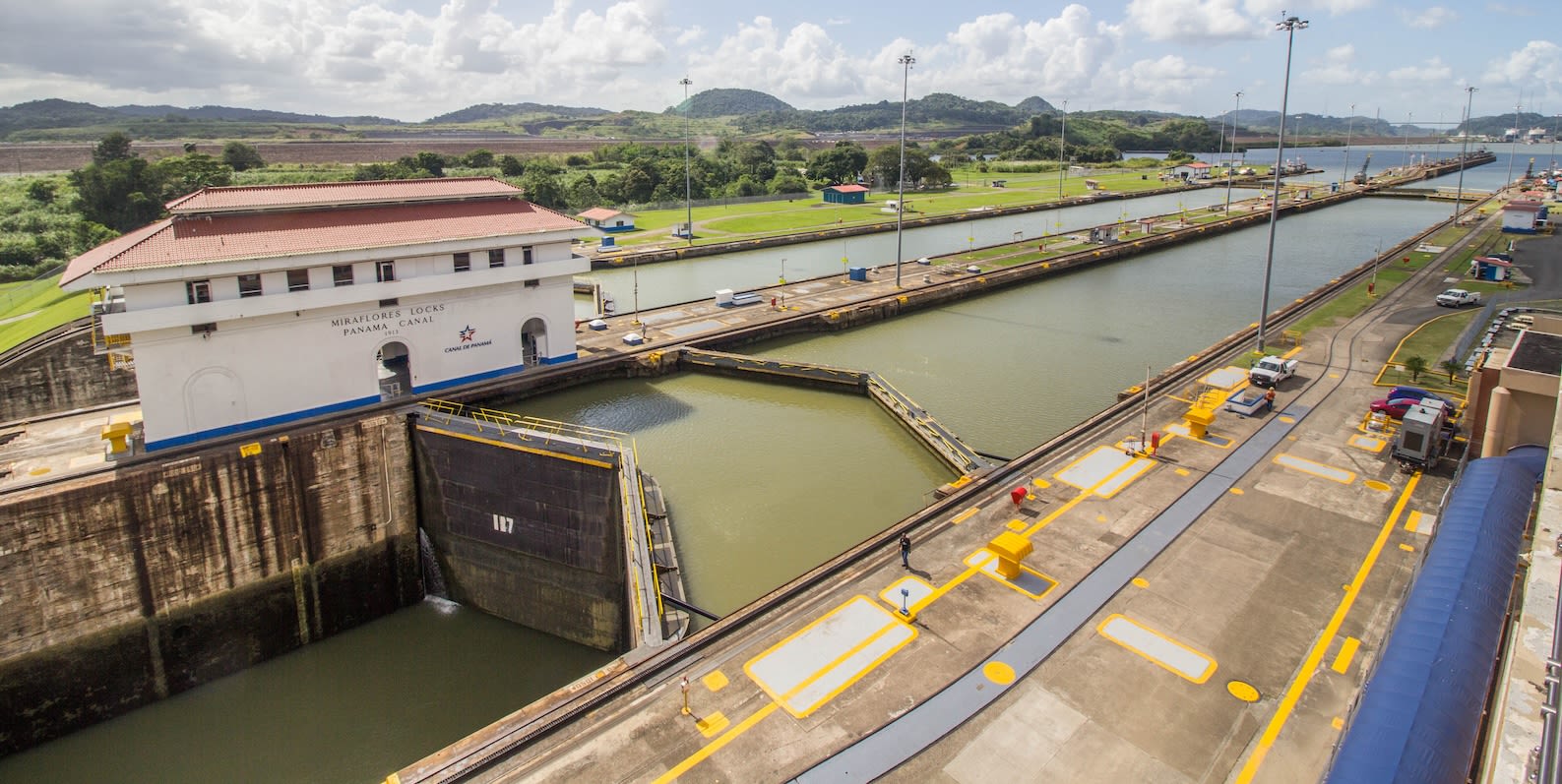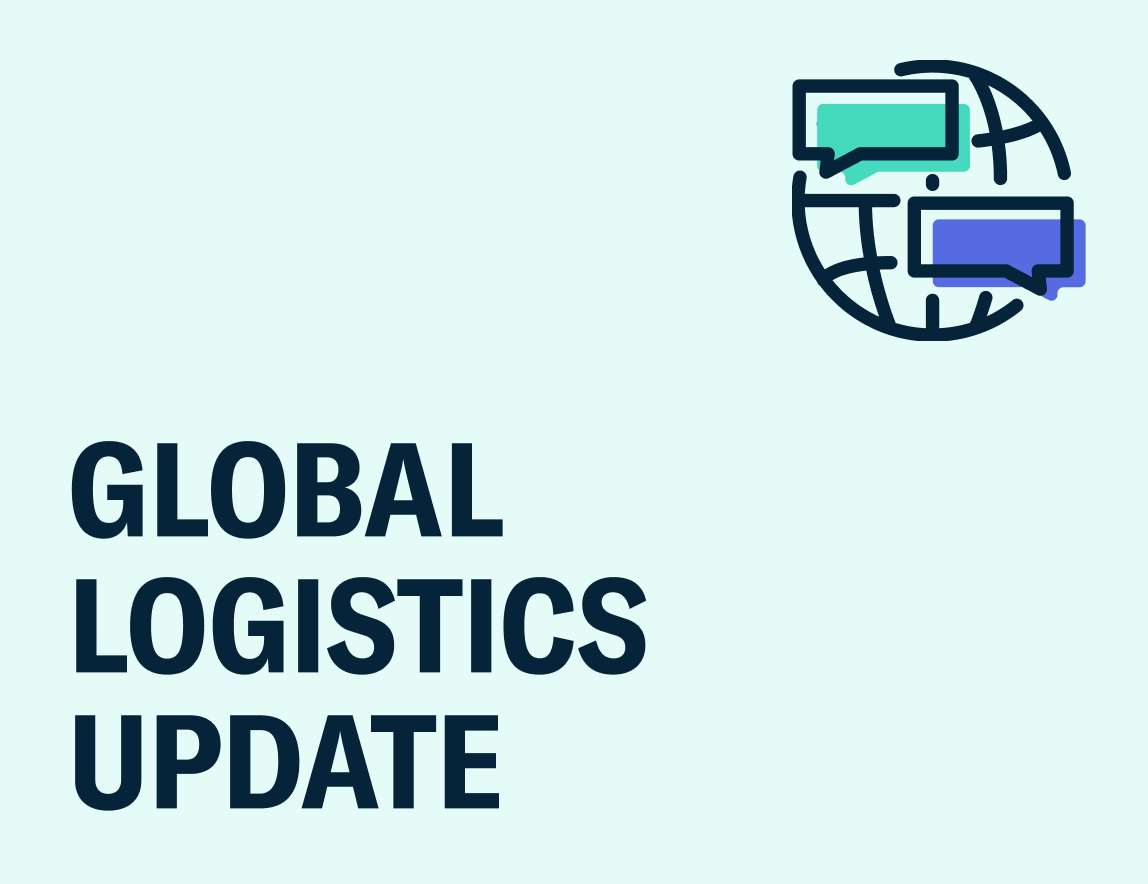
November 30, 2023
What You Need To Know About the Impact of the Panama Canal on Global Logistics
Tags:
What You Need To Know About the Impact of the Panama Canal on Global Logistics

November 30, 2023
This article was written by Kyle Beaulieu, Director of Global Ocean Procurement and Head of Transpacific, and Nathan Strang, Director of Ocean Freight, U.S. Southwest and SMB
Updated on December 6, 2023.
The first major shifts from US East and Gulf Coast-bound vessels from the Panama Canal to the Suez have been announced by THE Alliance (ONE, Hapag, HMM, Yang Ming). All consignees with cargo on routes EC1, EC2 and EC6 will be rerouted and should expect transit times to increase by 7-10 days.
The chart below lists the first set of ships that will be rerouted via the Suez Canal. For all shipments booked on EC1, EC2 and/or EC6, consignees should expect vessels to be re-routed via the Suez Canal. Flexport customers should continue working directly with their account manager for any questions related to these service changes.
Please refer to carrier-specific advisory pages for updates as they become available:
| Route | Week | Vessel/ Voyage | Origin | ETD | First Destination Port |
|---|---|---|---|---|---|
| EC1 | WK48 | MADRID EXPRESS 016E | Busan | Nov 28 | New York |
| EC1 | WK48 | BASLE EXPRESS 048E | Busan | Dec 2 | New York |
| EC1 | WK49 | DORTMUND EXPRESS 051E | Busan | Dec 8 | New York |
| EC2 | WK48 | AL QIBLA EXPRESS 030E | Busan | Nov 27 | Savannah |
| EC2 | WK49 | NEW YORK EXPRESS 050E | Busan | Dec 3 | Savannah |
| EC6 | WK48 | EVER SMILE | Busan | Nov 28 | Houston |
| EC6 | WK48 | MOL CELEBRATION | Busan | Nov 29 | Houston |
| EC6 | WK49 | MOL COURAGE | Busan | Dec 5 | Houston |
For any questions related to these service changes, please reach out to your Flexport account manager who can help you track in real-time which of your shipments may be impacted.
Updated on November 30, 2023.
The Current Situation
For months, the global shipping community has been closely watching the Panama Canal, as a severe drought has threatened water levels and forced the Panama Canal Authority to enact restrictions on the maximum weight and size of vessels that can transit its waters. The impact of the Panama Canal Authority’s restrictions has been negligible, as lower shipping demand offset any vessel weight restrictions–until now.
The Panama Canal Authority reduced the maximum draft of a vessel (the distance between the waterline and the deepest point of the boat) able to transit the canal from 14.9 meters to 13.4 meters. By February 2024, the average daily transits through the canal will drop to 18—down from a daily average of 34 from Jan-October 2023.
With these restrictions coming, ocean carriers on the Transpacific Eastbound are now shifting some services to go via the Suez Canal, which will extend transit times by at least seven days.
The Global Impact on Logistics
As conditions have worsened, routing via the Suez or even around the Cape of Good Hope is under consideration by all ocean carriers. In November, routings were changed on a few vessels, but a permanent shift has yet to be made.
The first major shift is coming in December. THE Alliance (ONE, Hapag, HMM, Yang Ming) is switching two services that call mainland China, Taiwan, and South Korea to the U.S. East Coast (EC1 and EC2), as well as its flagship service to the Gulf Coast (the EC6), also serving mainland China, Taiwan, and South Korea. It’s unclear if other alliances will follow suit to shift services permanently or if they will consider a per-vessel basis.
Transit time changes will be officially announced as soon as schedules are confirmed, but adjustments are expected to change U.S. East Coast transit times by about 7 days and Gulf Coast transit times by about 10 days. We expect services from Asia into Latin America to be impacted as well, as the EC1 mentioned above calls Manzanillo and Rodman, while EC2 calls Cartagena. The removal of these services will impact options from Asia to Latin America or backhaul services from the U.S. to Latin America or Latin America to Asia.
Flexport recommends that all cargo over 14 tons per TEU should transit via the Suez Canal or the U.S. West Coast. For remaining U.S. East and Gulf Coast services via the Panama Canal, TEU weight restrictions vary by carrier, but 7 tons per TEU is the average limit in place by carriers with restrictions.
How the Panama Canal Works
It takes almost 200 million gallons of water for every ship to transit the Panama Canal. And, in a drought, that’s become a problem. The Panama Canal operates with a lock system that is fed via freshwater drawn from Lake Gatun. The water flows from the lake, the high point of the canal, down through the lock system and is then discharged to sea. While the canal's newer locks can recycle about 60% of its water, it still requires a tremendous amount of water for every ship to pass through.
At this time of year, the lake’s average water level should be around 87 feet, but the lake currently sits at 81.8 feet and is forecasted to remain at or near that level through January. To make matters worse, the lake is only receiving 70% of the intake it needs (largely from rain) to satisfy the canal’s water usage.
To combat this, about a year ago the Panama Canal Authority began limiting the draft of vessels (the distance between the waterline and the deepest point of the boat) that are using the canal. The current draft limit is 44 feet (from a normal 50 feet). A lot of factors influence the draft of a vessel but the number one factor which can be controlled most readily is the vessel's weight. For every one foot of draft reduction, a container ship has to reduce its weight by the equivalent of 300-400 TEU (at 14 tonnes of cargo). Therefore a six-foot reduction in draft equates to 1800-2400 TEU of reduction in vessel capacity.
As the reduction in vessel draft proved to not be enough to manage Lake Gatun water levels, the Canal Authority began to limit the daily transits of vessels. The canal normally sees 34 planned transits per day. This has been reduced to 24 transits and is forecast to reduce to 18 by February 1, 2024.
Contact Flexport for More Information
For any questions related to these service changes, please reach out to your Flexport account manager who can help you track in real-time which of your shipments may be impacted. To learn more about the Panama Canal and how you can plan ahead, be sure to sign up for Flexport’s Freight Market Live webinar on December 14.
Want even more? Subscribe to Flexport’s Freight Market Update weekly newsletter to get the latest trends on global freight.
The contents of this blog are made available for informational purposes only and should not be relied upon for any legal, business, or financial decisions. We do not guarantee, represent, or warrant the accuracy or reliability of any of the contents of this blog because they are based on Flexport’s current beliefs, expectations, and assumptions, about which there can be no assurance due to various anticipated and unanticipated events that may occur. This blog has been prepared to the best of Flexport’s knowledge and research; however, the information presented in this blog herein may not reflect the most current regulatory or industry developments. Neither Flexport nor its advisors or affiliates shall be liable for any losses that arise in any way due to the reliance on the contents contained in this blog.
About the Author

November 30, 2023



